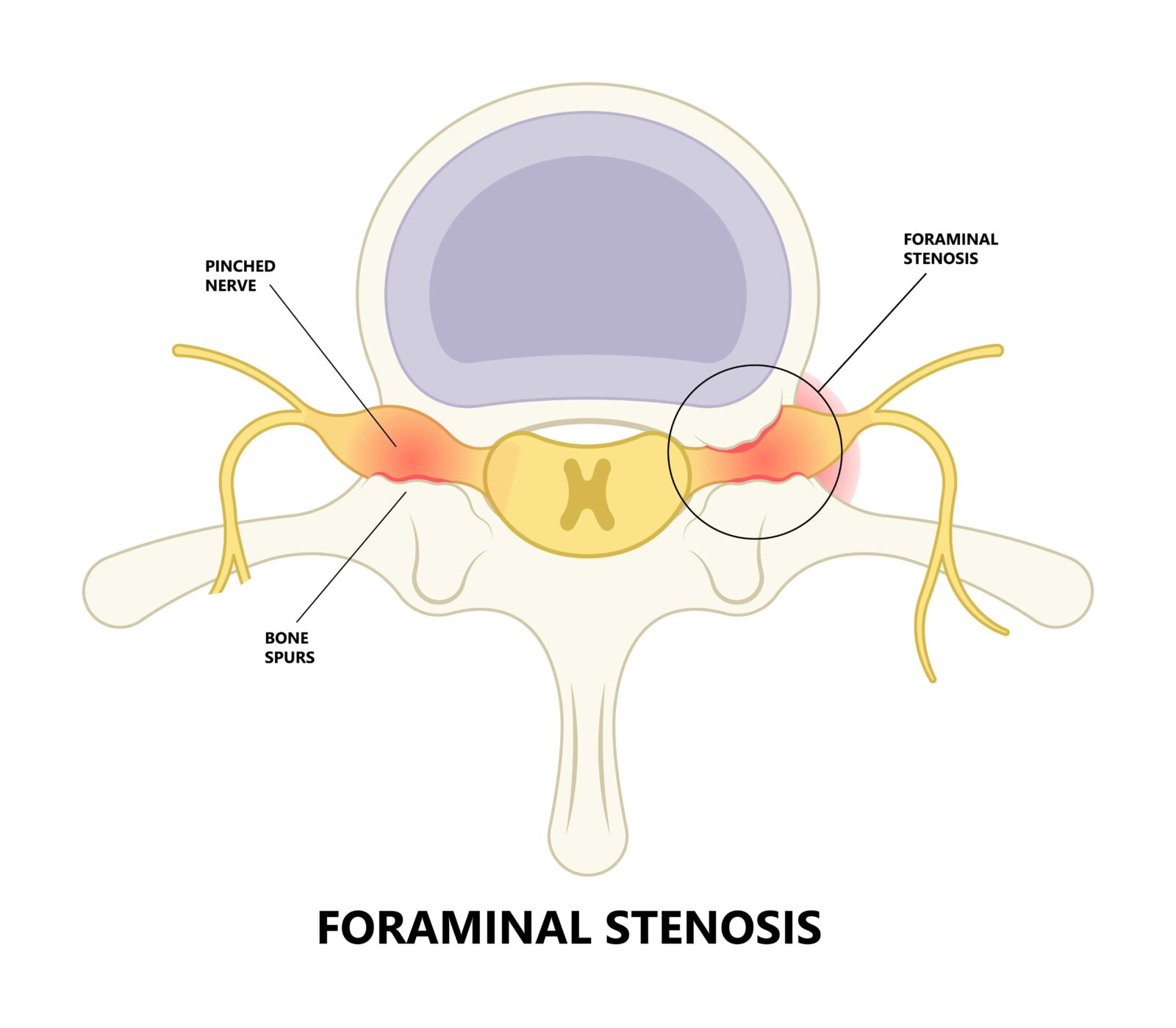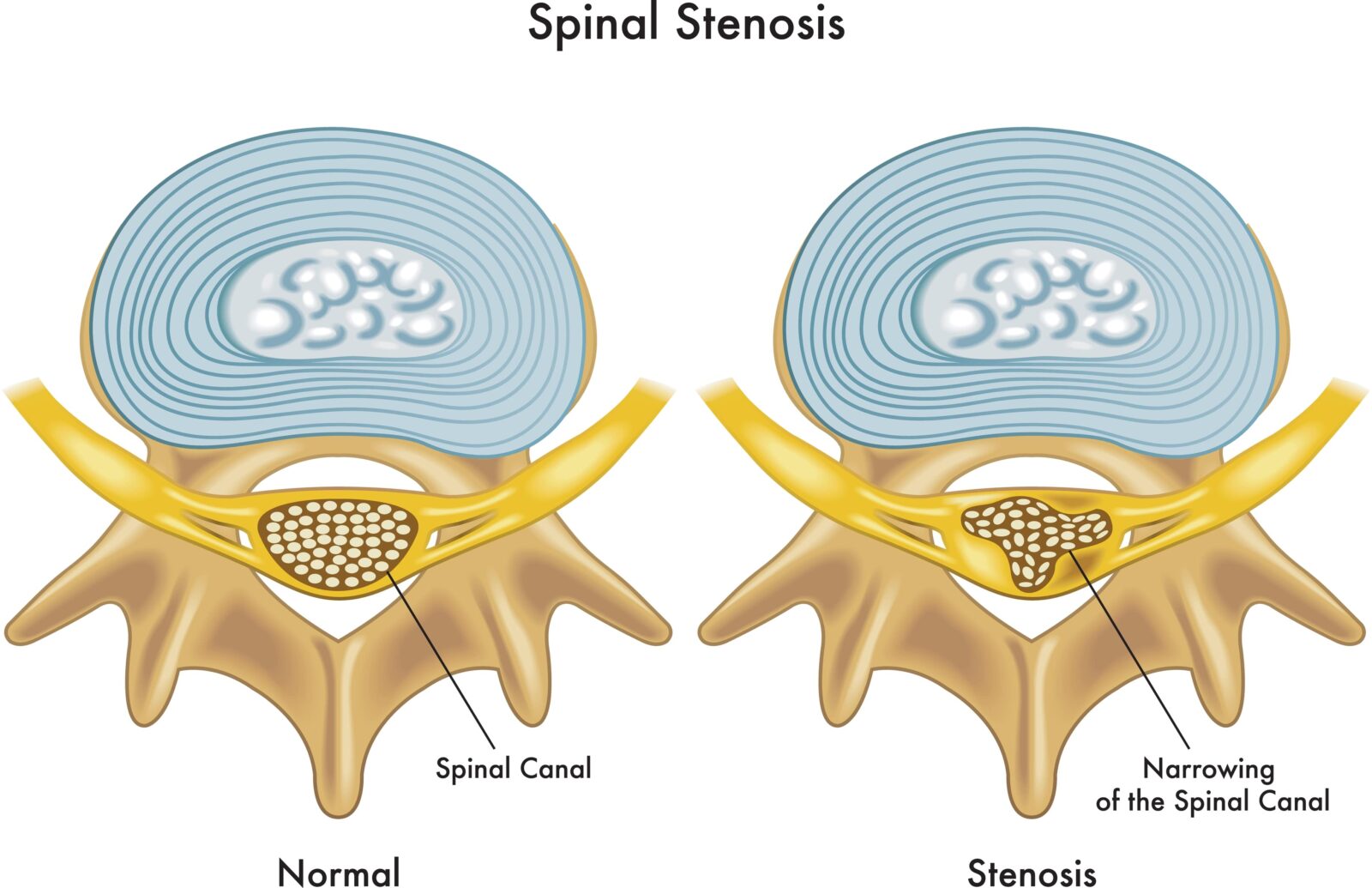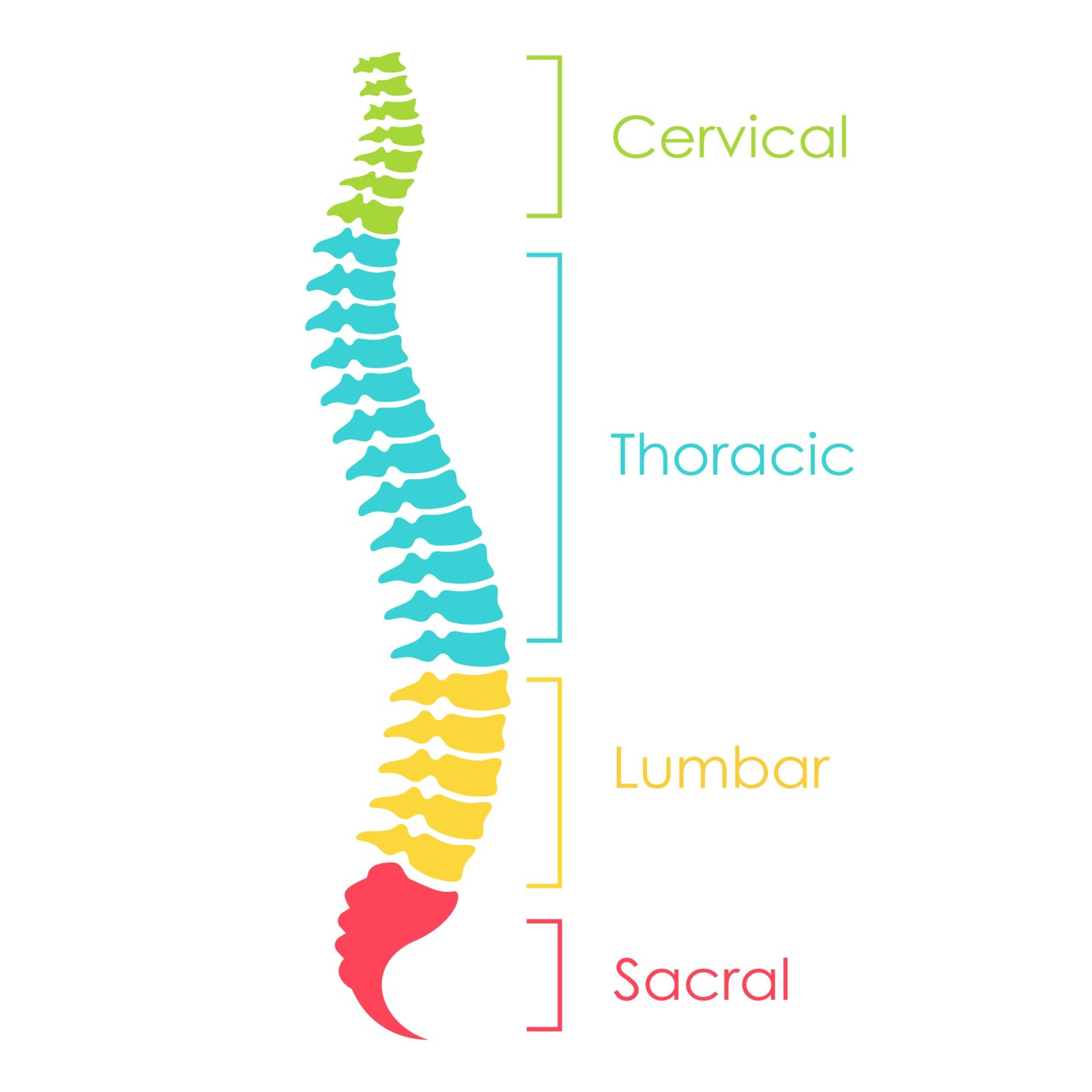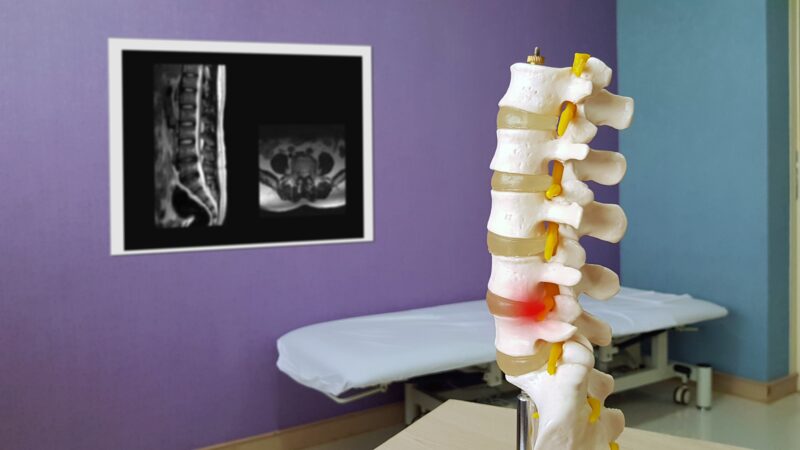Spinal stenosis is a common medical condition that affects a significant portion of the population, especially among the elderly. It refers to the narrowing of the spinal canal or the spaces within the spine, which can lead to compression of the spinal cord and nerves. This compression can result in various symptoms that range from mild discomfort to severe pain and impaired mobility. Understanding the different types of spinal stenosis is essential for accurate diagnosis, effective treatment, and improved quality of life.
Foraminal Stenosis:

Foraminal stenosis, also known as foraminal narrowing, is a medical condition that involves the narrowing of the openings called neural foramina or intervertebral foramina. These foramina are small passageways located between adjacent vertebrae in the spine. They serve as exit points for nerves that extend from the spinal cord to various parts of the body, such as the arms and legs.
When the neural foramina becomes narrowed or constricted, it can lead to compression of the nerves that pass through them. This compression can result in a range of symptoms, including pain, tingling, numbness, and weakness, which typically radiate along the pathway of the affected nerve. The severity of the symptoms can vary depending on the degree of narrowing and which nerves are affected.
Causes of Foraminal Stenosis:
- Herniated Discs: A herniated disc occurs when the soft inner material of a spinal disc protrudes through its outer shell. This protrusion can cause the foramina to narrow and compress nearby nerves.
- Bone Spurs (Osteophytes): Over time, the body might develop bony growths, known as bone spurs, as a response to the wear and tear of the spine. These spurs can encroach upon the neural foramina and reduce the available space for nerve passage.
- Degenerative Disc Disease: As spinal discs degenerate with age, they can lose height and elasticity, leading to changes in the alignment of the vertebrae. These changes might contribute to foraminal narrowing.
- Facet Joint Enlargement: The facet joints, located at the back of each vertebra, can also enlarge due to arthritis or degeneration. This enlargement can encroach on the neural foramina.
- Thickened Ligaments: Ligaments that support the spine can become thicker or calcified over time, contributing to foraminal narrowing.
Central Stenosis:

Central stenosis, also known as spinal canal stenosis, is a medical condition characterized by the narrowing of the central canal within the spinal column. The spinal canal houses the spinal cord, a vital component of the central nervous system that transmits nerve signals between the brain and the rest of the body. When the central canal becomes constricted or narrowed, it can result in compression of the spinal cord, leading to various neurological symptoms.
Causes of Central Stenosis:
Central stenosis can develop due to a variety of factors, often associated with the natural aging process and degenerative changes in the spine. Some common causes include:
- Degenerative Disc Disease: Over time, the spinal discs lose their elasticity and height, leading to changes in the alignment of the vertebrae. This can contribute to the narrowing of the central canal.
- Osteoarthritis: Arthritis-related changes in the spine, including the growth of bone spurs and the thickening of ligaments, can lead to the narrowing of the central canal.
- Herniated Discs: A herniated or bulging disc can impinge on the central canal and compress the spinal cord, resulting in central stenosis.
- Spinal Injuries: Traumatic injuries to the spine, such as fractures or dislocations, can cause misalignment and narrowing of the central canal.
- Tumors: Abnormal growths within or around the spinal canal can cause compression and narrowing.
Spinal Stenosis by Location
In some cases, spinal stenosis can also be identified based upon what part of the spine it affects. Depending on where the stenosis is located, it can cause different types of symptoms.

Lumbar Spinal Stenosis:
Lumbar spinal stenosis occurs in the lower back, specifically in the lumbar region of the spine. This type of stenosis often develops as a result of age-related changes such as degenerative disc disease, osteoarthritis, and the thickening of ligaments in the spinal canal. Symptoms of lumbar spinal stenosis can include lower back pain, leg pain or numbness, weakness, and difficulty walking. Pain tends to worsen when walking or standing and may improve when sitting or leaning forward.
Cervical Spinal Stenosis:
Cervical spinal stenosis affects the neck region of the spine. It can result from factors like herniated discs, bone spurs, or the thickening of ligaments. This type of stenosis can lead to symptoms such as neck pain, shoulder pain, tingling or numbness in the arms and hands, and potential weakness. Severe cases of cervical spinal stenosis can even lead to issues with balance and coordination.
Thoracic Spinal Stenosis:
Thoracic spinal stenosis is the least common type and affects the middle portion of the spine, known as the thoracic region. It’s usually caused by conditions like herniated discs, bone spurs, or spinal injuries. Symptoms might include mid-back pain, difficulty standing up straight, and discomfort in the chest region.
Treatment Options for Spinal Stenosis
The treatment approach for spinal stenosis depends on the severity of the condition, the type of stenosis, and the patient’s overall health. Here are some common treatment options:
Conservative Management:
Mild cases of spinal stenosis can often be managed with conservative methods such as physical therapy, gentle exercises, anti-inflammatory medications, and lifestyle modifications. Weight management and regular low-impact exercise can help alleviate symptoms and improve overall spinal health.
Pain Management:
For those with persistent pain, pain management techniques like epidural steroid injections can provide temporary relief by reducing inflammation around the compressed nerves.
Surgical Interventions:
In cases where conservative treatments are ineffective or the condition is severe, surgical interventions might be considered. Procedures such as laminectomy, laminoplasty, and spinal fusion can create more space within the spinal canal, alleviating the pressure on the nerves.
Minimally Invasive Procedures:
Advancements in medical technology have led to minimally invasive procedures, such as endoscopic surgeries, that offer smaller incisions, reduced recovery time, and potentially less post-operative discomfort.
In Conclusion
Spinal stenosis is a complex condition that can significantly impact a person’s quality of life. Understanding the different types of spinal stenosis, their causes, and the available treatment options is crucial for individuals dealing with spinal stenosis and their healthcare providers. By working together to manage symptoms and improve spinal health, patients can find relief and maintain an active and fulfilling lifestyle. If you suspect you have spinal stenosis or are experiencing symptoms, it’s important to consult a healthcare professional for proper diagnosis and personalized treatment recommendations.










